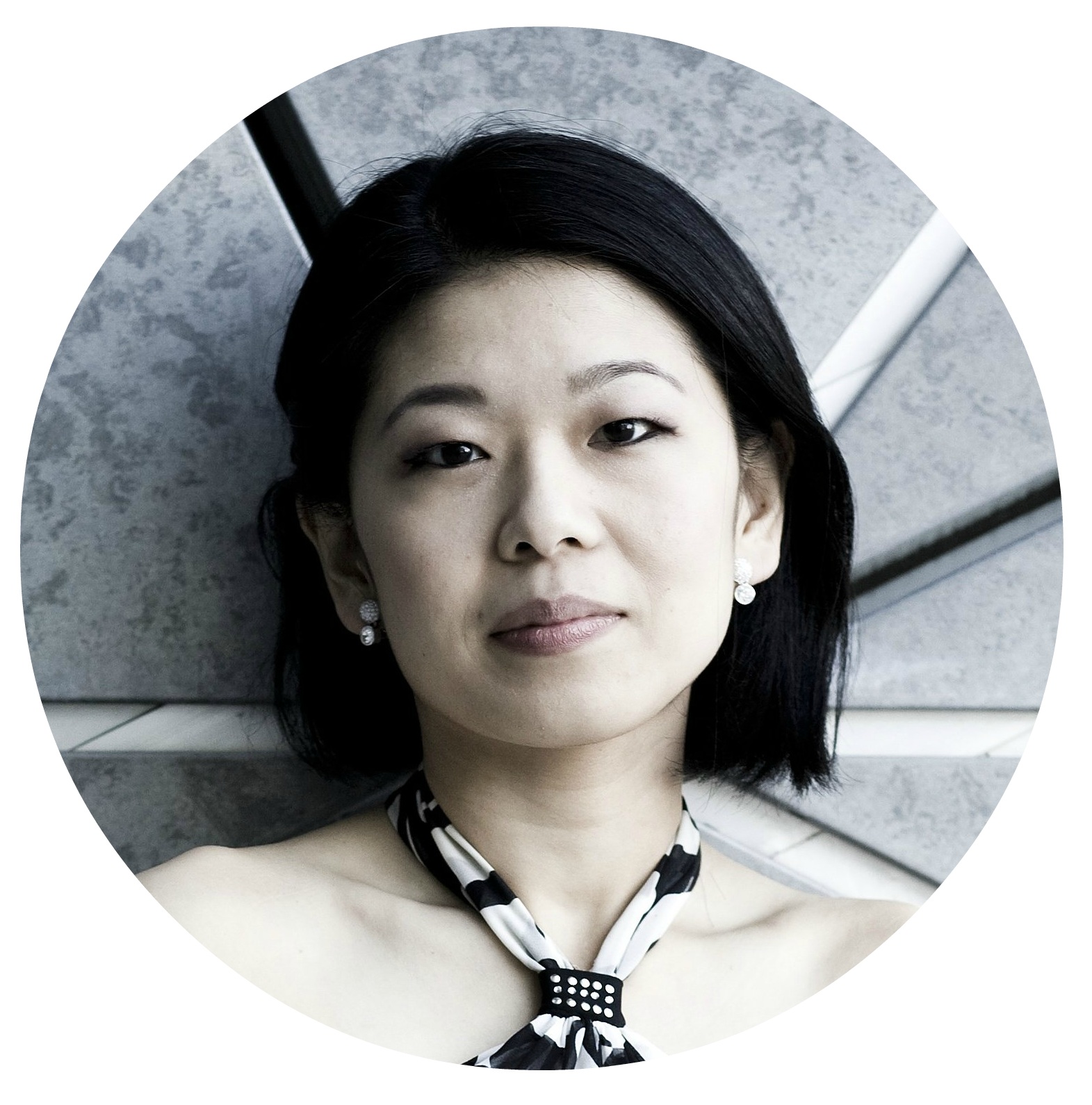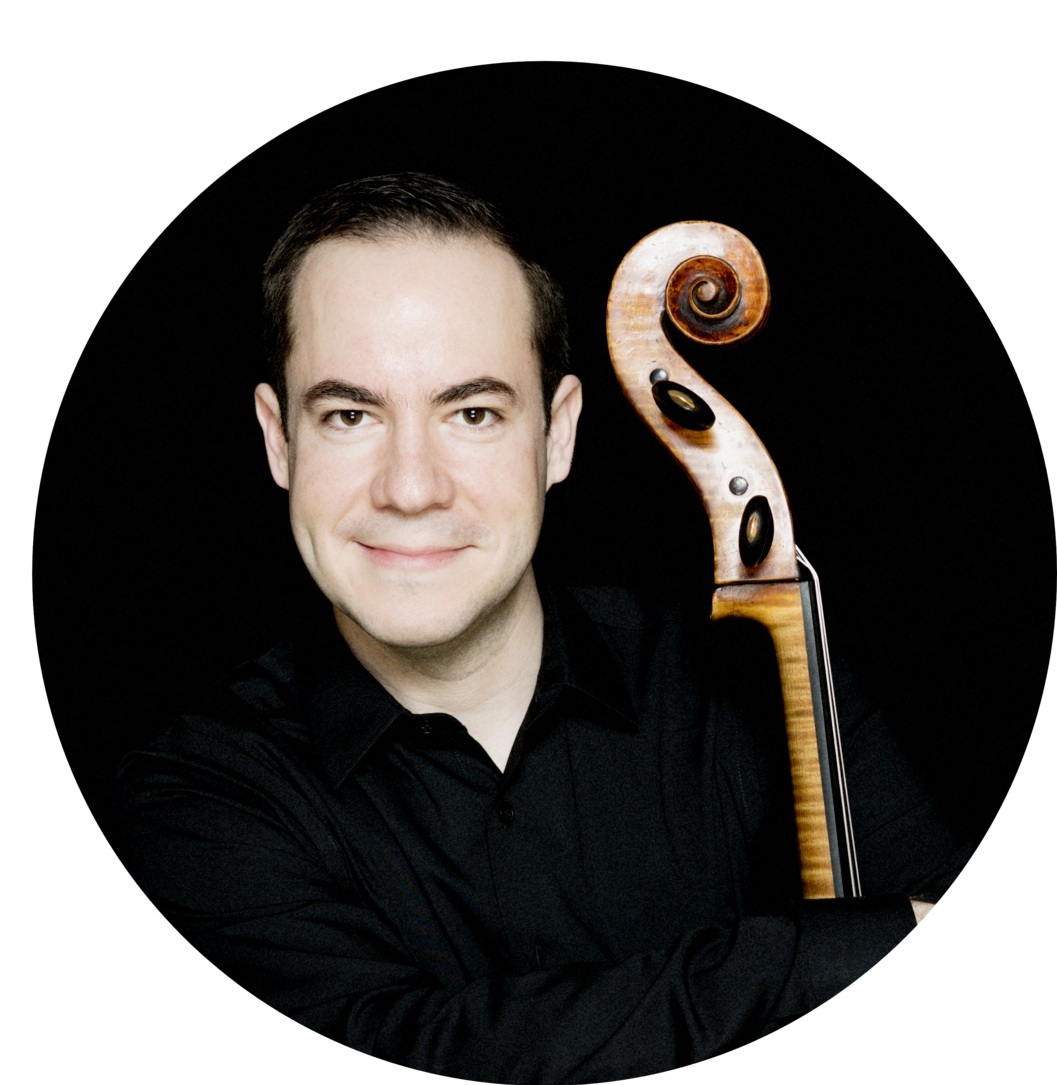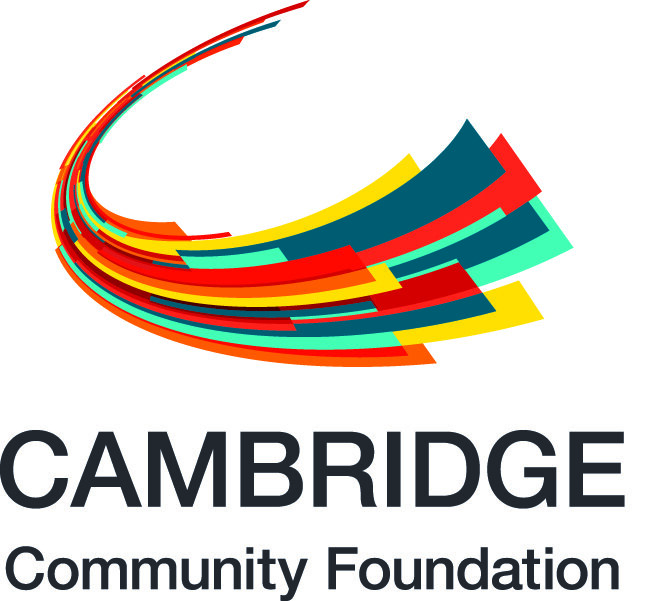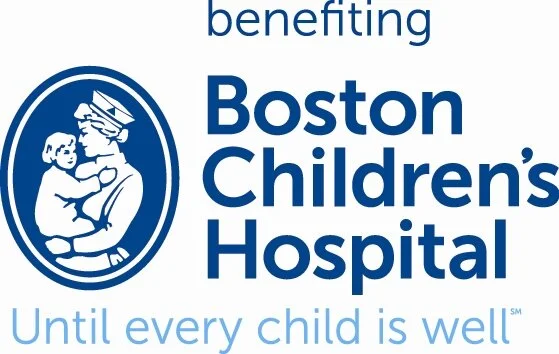JOHN HARBISON Remembering Gatsby; Foxtrot for Orchestra
JOAN TOWER Duets
BRAHMS Double Concerto for Violin and Cello
Ayano Ninomiya, violin and Blaise Déjardin, cello
Benefiting Cambridge Community Foundation and The Palfrey Child Advocacy Scholars Program at Boston Children's Hospital
Soloist Bios
+ Ayano Ninomiya, violin
Praised by The New York Times as "deeply communicative and engrossing," violinist Ayano Ninomiya is committed to creating invigorating live performance experiences from concert stages to private homes and public schools.
Equally at home as a soloist, recitalist, and chamber musician, Ayano has performed throughout the United States, Canada, Europe, and Asia, New Zealand, and Australia. In addition to recent performances at Weill Hall, Zankel Hall, and Merkin Hall, she made her Carnegie Hall debut in 2016 with the Stravinsky Violin Concerto. Recent performances include solos with A Far Cry, the Jacksonville Symphony, Symphony Pro Musica, and Boston Philharmonic Youth Orchestra, as well as recitals at the Music Mountain Festival, the Sembrich Opera Museum, and the Moab Festival. She will also perform with Beaux Arts Series (FL), Chamber Music International (TX), Boston Chamber Music Series, and Chameleon Ensemble (MA).
She has won numerous awards, including the Naumburg International Violin Competition, the Tibor Varga International Competition, Astral Artists National Auditions, and the Young Performer’s Career Advancement Award (APAP). As a recording artist, Ayano has released a variety of albums including a solo album of works for violin by Larry Bell and three albums as the first violinist of the Ying Quartet.
In 2012 Ayano was invited to give a TEDx talk at the University of Tokyo. Other past projects include a benefit performance for victims of the 2009 Haiti earthquake, a fundraiser in the aftermath of the 2011 Tohoku earthquake with sumo wrestler Konishiki, and the creation of her own Elderhostel “Day of Adventure” programs in NYC that gave an insider's view of making music. As a recipient of the Frank Huntington Beebe Fellowship, Ayano conducted research of scores at the Bartók Archives in Budapest, Hungary.
During the summers, she has performed at the Marlboro, Ravinia, Skaneateles, Caramoor, Bowdoin, and Moab music festivals, as well as at Prussia Cove's International Musicians Seminar, the Canberra International Festival (Australia), and the Adams Festival (New Zealand), among others. She has been invited to tour France and the U.S. with "Musicians from Marlboro" (Marlboro Festival) and "Musicians from the Steans Institute" (Ravinia Festival). She is also a founding member of the exciting conductorless string orchestra, ECCO (East Coast Chamber Orchestra). Because of her own experience beginning the violin in a public school program in Boston at the age of seven, Ayano has given programs for children across the U.S. from Bethlehem, New Hampshire to Columbia, Missouri, to Denton, Maryland.
After graduating from Harvard University and The Juilliard School, Ayano studied at the Franz Liszt Academy in Budapest, Hungary. Her principal teachers and mentors were Miriam Fried, Robert Mann, Eszter Perenyi, Michele Auclair, and Robert Levin at Harvard. From 2010-2015, Ayano was first violinist of the Ying Quartet and Associate Professor at the Eastman School of Music. In the fall of 2015 she joined the faculty of the New England Conservatory of Music. She has been a volunteer tutor for at-risk high school students at the East Harlem Justice Center and volunteer at the Lighthouse Music School (NYC). In her spare time, she loves to paint and practice Aikido.
+ Blaise Déjardin, cello
Strasbourg-born cellist Blaise Déjardin was appointed principal cello of the Boston Symphony Orchestra by BSO Music Director Andris Nelsons in spring 2018, having joined the BSO’s cello section in 2008. Previously, Déjardin was a member of the European Union Youth Orchestra and the Gustav Mahler Jugendorchester. He was a founding member of the Boston-based string orchestra A Far Cry, and in 2010 he founded the acclaimed Boston Cello Quartet with three BSO colleagues. He has arranged numerous pieces for cello ensembles, earning four ASCAP Plus Awards and receiving commissions from Yo-Yo Ma, the Boston Symphony Orchestra, and A Far Cry. In 2013 he launched Opus Cello, his online sheet music publishing company. He has served as artistic director of the Boston Cello Society since its creation in 2015.
Mr. Déjardin has performed as soloist with orchestra around the world. In 2008 he gave the U.S. premiere of French composer Edith Canat de Chizy’s Formes du vent for solo cello. A dedicated chamber musician, he spent two summers at Ravinia’s Steans Institute for Young Artists. He holds a first prize in Cello with highest honors from the Conservatoire National Supérieur de Musique of Paris, as well as a master of music diploma and a graduate diploma from the New England Conservatory in Boston. His main teachers were Philippe Muller, Laurence Lesser, and Bernard Greenhouse. Mr. Déjardin made his debut with orchestra at age fourteen performing Haydn’s C major concerto at the Corum in Montpellier, France.
Among his numerous awards and honors, he was awarded first prize at the Maurice Gendron International Cello Competition and was also the youngest prizewinner at the 6th Adam International Cello Competition in New Zealand. In 2007 he made his Paris recital debut at Le Petit Palais as a laureate of the program Declic supporting emerging young soloists in France. He has taught privately and at the New England Conservatory and Tanglewood Music Center.
Program Notes
Written by Steven Ledbetter
© Steven Ledbetter (www.stevenledbetter.com)
+ JOHN HARBISON Remembering Gatsby, Foxtrot for Orchestra
John Harbison was born in Orange, New Jersey, on December 20, 1938. He lives in Cambridge, Massachusetts and Token Creek, Wisconsin. He composed Remembering Gatsby in 1985, conceiving it as the overture to an opera that he longed to write, but for which he did not get literary clearance until more than a decade later. The score calls for three flutes (3rd doubling piccolo), three oboes (3rd doubling English horn), three clarinets (3rd doubling bass clarinet and soprano saxophone), two bassoons and contrabassoon), four horns, three trumpets, three trombones, tuba, timpani and three percussionists, piano, and strings. Duration is about 7 minutes.
In the early 1980s, John Harbison (who was to win the 1987 Pulitzer Prize and later received a MacArthur Award) was eager to turn F. Scott Fitzgerald’s 1920s jazz-age novel The Great Gatsby into an opera. Fitzgerald’s novel offers a passionate drama in a quintessentially American novel about a man who completely recreates himself and lives a lie, only to bring about tragedy when he re-encounters the one woman he has ever loved and who ever loved him. Another strong appeal to Harbison was the setting during a time when American popular music was blessed with great songwriters like George Gershwin (one of Harbison’s heroes), Richard Rodgers, Cole Porter, and Harold Arlen, as well as a whole string of less famous tunesmiths of Tin Pan Alley. Harbison had played jazz as a young man and he was greatly drawn to the songs and their stylishness, and he knew that an opera set in New York and Long Island during the racy years of Prohibition could hardly avoid evoking the music of the era.
So enthusiastic was he to create such an opera that he wrote a libretto and composed an overture before learning that the publisher of the book was not willing to grant copyright permission to use the material. The project remained frozen for over a decade, though Harbison completed the overture, in any case, as a purely instrumental work in 1985 on a commission from the Atlanta Symphony Orchestra, which premiered it under the direction of Robert Shaw.
Roughly a decade later, now a widely recognized and celebrated composer, Harbison was able to arrange for the rights to the Gatsby material and composed his opera on a commission from the Metropolitan Opera, to celebrate the twenty-fifth anniversary there of James Levine, and to be the first new opera performed at the Met in the new millennium. The world premiere performances that took place in December 1999 to great success.
In the meantime, the opera’s overture, bearing the concert title Gatsby Remembered, has won a lively concert life of its own, having been heard on symphony concerts nationwide and even on The Prairie Home Companion radio show.
The opening chords hint at the tragedy that will ultimately come (the composer considers this music a representation of Gatsby’s vision of the green light on Daisy’s dock and hints at his obsessive love for her). But much of the overture sets the stage for its jazz-age setting with a zippy foxtrot. Harbison decided to compose his own original jazz-age popular songs for the opera, because actual songs of the period would have too many different connotations of their own. These songs appear throughout the opera, especially at the grand parties that Jay Gatsby throws in his Long Island mansion, and they could easily be mistaken for genuine pop songs of the day.
The foxtrot tune that dominates Remembering Gatsby is one that we hear in the opera with lyrics by Murray Horwitz (splendidly imitating the period style), which begin:
*Night’s gleaming,
The light’s beaming,
And I’m dreaming of you...*
[Copyright 1999 by Associated Music Publishers, Inc. (BMI) and G. Schirmer, Inc. (ASCAP), New York, N.Y.]
This catchy dance melody, played by a “concertino” in the orchestra that recreates the sound of 1920s society dance bands, evokes the casual flirtatiousness of the period, set against the overwhelming passions of Jay and Daisy. During the course of the overture, the foxtrot is gradually overwhelmed by a hint of the tragedy to come.
+ JOAN TOWER Duets
Joan Tower was born in New Rochelle, New York, on September 6, 1938. She composed Duets on a commission from the Los Angeles Chamber Orchestra, to whom it is dedicated. It was compsed and premiered in 1994. The score calls for paits of flutes, oboes, clarinets, bassoons, horns, and trumpets, plus timpani, percussion, and strings. Duration is about 19 minutes.
Joan Tower has long since emerged as one of our most significant composers. Her first orchestral work, Sequoia had the distinction of being the only American work on the 1982 United Nations Day concert of the New York Philharmonic under Zubin Mehta, following performances on their regular subscription series at Lincoln Center, and it quickly entered the repertory. She spent three years (1985-88) as composer-in-residence at the St. Louis Symphony as part of the Meet-the-Composer Residency program, and Silver Ladders, composed during that period, won the 1990 Grawemeyer Award for Music Composition.
Born in New Rochelle, N.Y., Joan Tower grew up in South America, where her father worked as a mining engineer. When she returned to the United States, she attended Bennington College and Columbia University, and founded the Da Capo Players (winner of the Naumburg Award for Chamber Music in 1973), of which she was the pianist for fifteen years, until her composing career took off so brilliantly. (Indeed, she once joked that she used to be known as a pianist who composed; now she is a composer who also plays the piano.)
Her many grants include some from the Guggenheim Foundation, the National Endowment for the Arts, the American Institute & Academy of Arts & Letters, the Koussevitzky Foundation, and the Fromm Foundation. She was also the subject of a nationally broadcast TV documentary produced by WGBH TV which won Honorable Mention at the American Film Festival. Joan Tower has taught at Bard College since 1972. She is currently Asher Edelman Professor of Music there.
Her work for orchestra is voluminous and wide-ranging, including some works that specifically reflect her American roots. One of the most frequently-performed is the first work (of five!) bearing the title Fanfare for the Uncommon Woman, which refers to Aaron Copland’s World War II score Fanfare for the Common Man. In 2005, she became the first composer commissioned in “Ford’s Made in America” program, designed to allow orchestras with smaller budgets to take part in commissioning works from significant American composers, with the aim of getting the work performed by at least one orchestra in every state of the union, many of them amateur or community orchestras that would normally never have such an opportunity.
The title of Duets suggests a chamber piece, but in fact the work is for chamber orchestra treated in a special way so that the different instruments perform in pairs (Bartók did something like this in a movement of his Concerto for Orchestra, called “game of couples.” The piece is in a single movement divided into slow-fast-slow-fast sections. Regarding this work, the composer has written:
"In three of my concertos for flute, clarinet and violin, I explored the idea of pairing the soloist with the corresponding first chair player in featured cadenzas (an idea I got from Schuman's Cello Concerto). In Duets, I developed that idea within the orchestra, concentrating on pairs of cellos, flutes, horns, trumpets, and to a lesser degree violins, oboes, clarinets and percussion, creating an overall concerto grosso-like effect." -Joan Tower
+ BRAHMS Concerto in A minor for violin and cello, Opus 102
Johannes Brahms was born in Hamburg, Germany, on May 7, 1833, and died in Vienna on April 3, 1897. He composed his Double Concerto at Thun in Switzerland in the summer of 1887 and led its first performance at Cologne on October 18, 1887, with Joseph Joachim and Robert Haussmann as the soloists. In addition to the solo performers, the score calls for two each of flutes, oboes, clarinets, and bassoons, four horns, two trumpets, timpani, and strings. Duration is about 32 minutes.
After completing the Fourth Symphony, Brahms concentrated mostly on chamber music in the decade that was left to him. He wrote only a single orchestral work in that time. And that last work for orchestra—the Double Concerto, composed in the summer of 1887—was for years viewed as knotty and inaccessible. It is, without doubt, as closely wrought as anything in Brahms’s output, a serious work of great strength containing little in the way of mere virtuoso spectacle. And yet the two soloists are given prominent and very demanding roles (the cello predominating slightly), carefully woven into the texture and designed to produce rich sonority when they are playing alone.
Brahms conceived the concerto partly as a peace offering to his friend Joseph Joachim, from whom he had been estranged in 1880, when his clumsy attempts to patch up the Joachims’ marriage (which was foundering over Joachim’s apparently unreasonable jealousy and the belief that his wife had been unfaithful) actually precipitated their divorce. The solo violin and cello parts were conceived for Joachim and for Robert Hausmann (cellist of the Joachim Quartet). Brahms sent them the parts by mail after completing the concerto in Switzerland in the summer of 1877. A piano rehearsal at Clara Schumann’s house late that September marked the first time the two men had spoken in some seven years. The premiere took place a month later, on October 18.
The response was mixed, and even today the Double Concerto is the least familiar of Brahms’s four concertos. Tovey explains the cool reaction this way: “Brahms did not make the new work a systematic display of the charms of the new combination, but simply expressed some of his most powerful and dramatic ideas for all the world as if the combination of instruments was perfectly familiar.”
For the American premiere, given by Theodore Thomas just over a year later, the difficulties of the solo parts induced the violinist and cellist to undertake a heroic sacrifice for the benefit of the performance. The two soloists, Max Bendix and Victor Herbert, both personable young men in their twenties (Herbert was not yet known as an operetta composer, but he was regarded as the finest cellist in America) knew that the main part of the rehearsals would fall within the period of Christmas and New Year’s, seasons normally full of social obligations, especially to genial young fellows like themselves. So in order to give themselves enough time to rehearse the demanding parts, and to fortify their resolution to turn down party invitations, the two young men refused to shave for the rehearsal period. Their decision was apparently a good idea, since all the critics praised their playing, though, as the Musical Courier opined, the concerto itself was “not the most catchy thing imaginable.”
The concerto opens with a brief, forceful assertion for full orchestra interrupted by the unaccompanied cello in a meditative recitative that takes off from the orchestra’s last three notes. The orchestra tries again, this time with a more lyrical idea, but now the violin picks up the close of the phrase as the basis for its own recitative. The cello rejoins the violin in a brief virtuosic display that leads into the exposition proper; this elaborates the two ideas already presented, linking them with a dissonant syncopated idea that will have consequences later. The brevity of the thematic ideas as originally presented does not prevent Brahms from working out a substantial symphonic development in which the solo instruments fully participate, each smoothly picking up the cues left by the other and carrying the progress forward with endless variety and surprise.
By contrast with the terse themes of the first movement, the lyrical melody that opens the slow movement, growing out of Brahms’s favorite horn-call figure, is elaborated to generous length. A new theme, rather folk-like in character, provides contrast of key, and the return to the tonic brings back the melodies in reverse order, the principal theme this time gloriously developed in the winds while the solo instruments sing their hearts out in unison.
The cellist leads off in the closing rondo sonata to introduce the principal theme in A minor; the cellist also has first crack at the second theme, in C major. But when the cello attempts to insist that Brahms is writing a rondo by returning to the opening theme and key, the violin disagrees and begins further elaboration that will lead to new episodes, including passages in the stirring Hungarian gypsy style that Brahms managed so well. Finally, when both main themes have been restated in the home key, the soloists take off on their hair raising run homewards, while Brahms considerately scores the orchestra very lightly in order to give them every opportunity of having the last virtuosic word.
© Steven Ledbetter (www.stevenledbetter.com)





